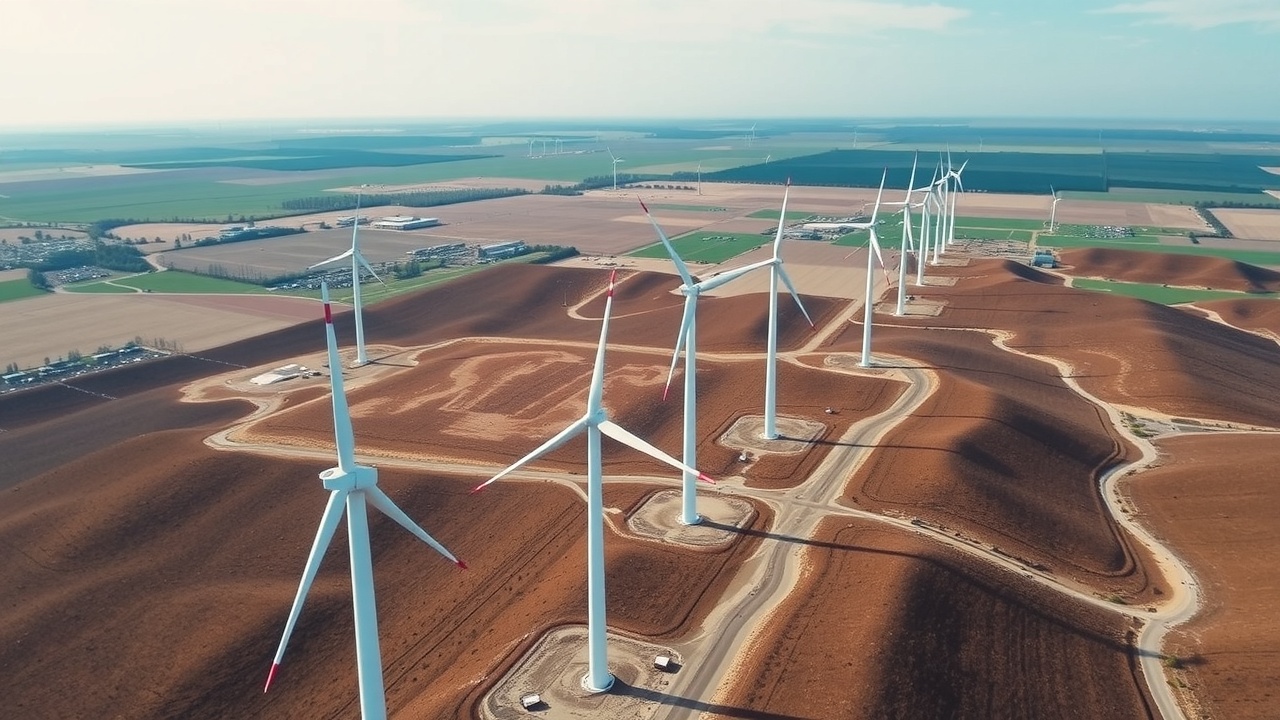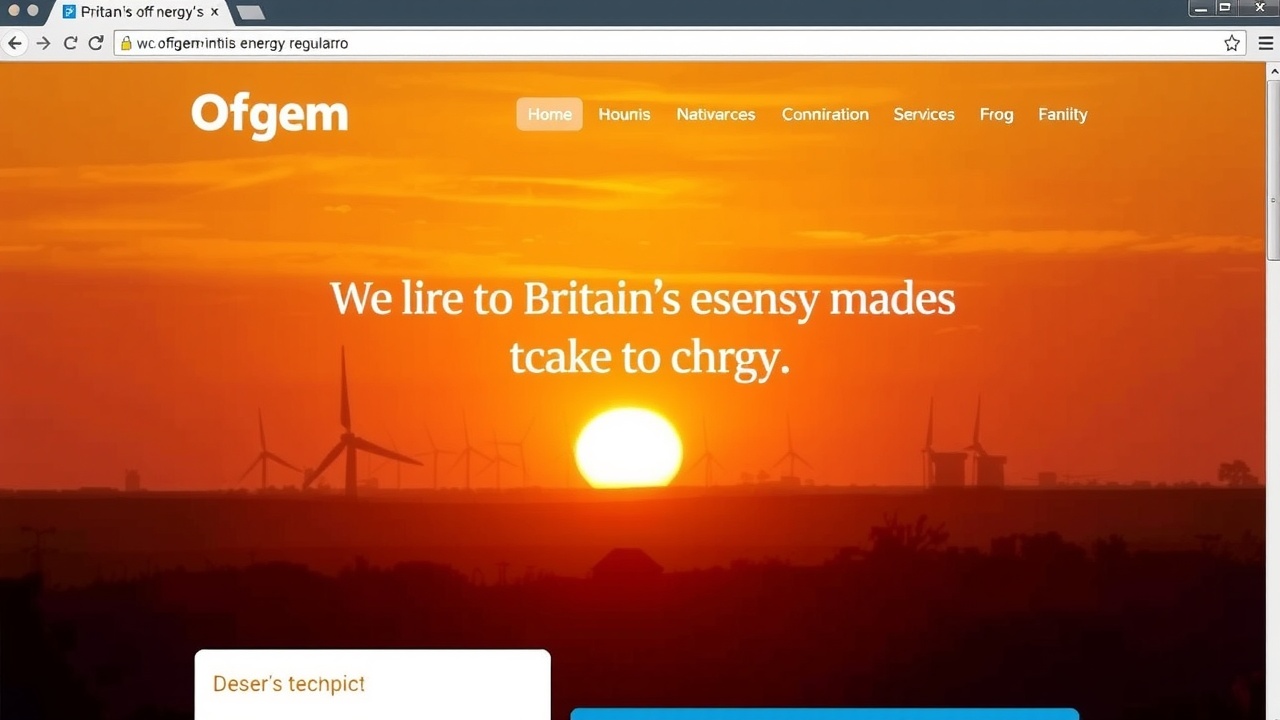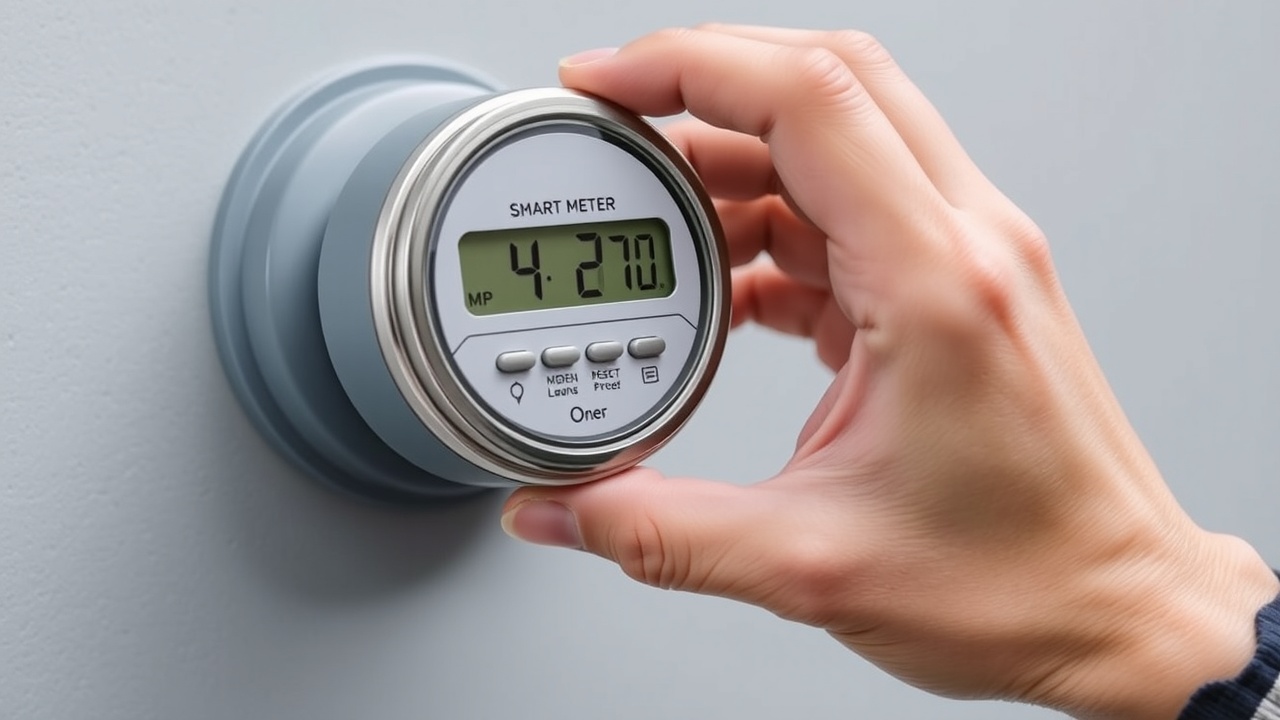
Investors in renewables have not been rewarded, says Kaylie Pferten Will they fund the government's plans?By 2030, the government aims to transform Britain into a "clean energy superpower"
The government's own statistics show that the UK's share of electricity generation from renewables is currently 46%. The pledge stipulates that at least 95% of electricity must originate from low-carbon sources. To achieve this, onshore wind will need to be doubled to 35 GW, solar power will need to be tripled to 50 GW, and offshore wind will need to be quadrupled to 55 GW.
Additionally, a large investment in distribution and storage will be needed for this. In order to support the shift to renewable energy sources, National Grid, the network operator, raised £6.8 billion in a rights issue last year as part of plans to invest £23 billion over the next four years to upgrade its transmission network. Less than 5GW of batteries are currently installed, but according to the 138-page Action Plan released in December by the UK Department for Energy Security and Net Zero (DESNZ), 29GW to 35GW of batteries will be needed by 2030.
All of this adds up to a significant amount of investment: 40 billion annually is required between now and 2030 if the targets are to be met. Therein lies the problem: where will that come from? It is unclear who will step up to fund these clean energy aspirations, as the government's own borrowing is constrained by nervous global bond markets.
During a multi-year surge in interest in green energy, the stock market provided funding for a sizable portion of the renewables capacity that the UK has already constructed. Nine initial public offerings (IPOs) of renewables investment vehicles raised over £10 billion in 2021 alone, according to sponsored equity research boutique Hardman and Co. However, this boom has now turned into a bust.
The 20 renewable energy infrastructure funds (REIFs) that are listed in the UK now have a combined market capitalization of only 10 billion. As markets have questioned the REIFs' economics, current investors have seen a dismal return on their capital over the past two years, and scarcely any new capital has been raised.
According to data from ShareScope, the average discount to net asset value (NAV) had fallen to 42% by the end of January. The Greencoat UK Wind, whose share price was "just" 20% below NAV, has been the best of a bad bunch. With a staggering 74% discount, HydrogenOne Capital Growth performed the worst; Jim Ratcliffe and his massive chemicals company Ineos were among its core investors.
Bond yields are just one aspect of the issue.
Fair-value accounting, which mandates that NAV be marked down when the "risk-free rate"basically, the yield on ten-year UK government bondsincreases, has contributed to some of this awful performance. Ironically, rising bond yields have deterred investment in renewable energy, partly due to rising energy prices a few years ago. This is a result of fair-value accounting. It's unfortunate because increased investment would have reduced energy prices and helped the nation's trade deficit.
It should be noted that in addition to REIFs, other investment trusts with illiquid and difficult-to-value holdings have also seen larger discounts to NAV as a result of rising government bond yields. Many private-equity investment trusts now trade at much larger discounts than they did in the past; for example, HarbourVest Global Private Equity has seen discounts of up to 40%.
Rising bond yields, however, do not account for the dividend cuts in the REIF sector, which currently trades at an average yield of more than 10%. This appears to be distressed valuations, considering the 4.5 percent yield on UK government bonds. The stock market is currently pricing some REIF assets below what new projects would cost to build. Battery energy storage system (BESS) investor Harmony Energy Income Trust (LSE: HEIT) estimates that new capacity costs 842,000 per MW. Harmony's market value for its current assets is 616,000 per MW, which is in contrast to that. As a result, it is currently attempting to sell off its whole portfolio in order to realize value.
It is important to consider the TMT infrastructure bubble of the late 1990s in order to comprehend what is happening. A bad industry for shareholders will typically have the following traits, according to strategy and management expert Richard Rumelt: i) a product that is an undifferentiated commodity; ii) everyone has access to the same technology; iii) buyers are price sensitive and will quickly switch suppliers to get a better deal; and iv) large sunk capital costs, but low marginal costs so that old capacity will continue to operate. He cites the example of Global Crossing and other fiber-optic cable companies, which went bankrupt more than two decades ago after it was discovered that they had overinvested in capacity and that it had collapsed revenue. The UK-listed REIFs show parallels, as their supply of new capacity has outpaced their growing demand.
How does it affect battery funding?
The story wasn't meant to unfold like this. The REIFs benefited from a significant tailwind in 2022 when Russia invaded Ukraine and gas prices rose. The competitiveness of combined cycle gas turbine (CCGT) generation declined. The majority of CCGT's operating costs are related to the gas that is burned to generate power, in contrast to renewables, which have a high upfront capital cost but low marginal cost (wind and sunshine are free). Nevertheless, the intermittent nature of renewable energy presents a challenge. At times when the grid is overloaded (early in the morning for wind, midday for solar), it is unable to handle the extra power. Renewable assets may need to be curtailed during these periods, meaning they may need to be paid to shut off.
The BESS industry offers an excellent example of the issues. These enormous batteries provide grid flexibility and stability by temporarily storing excess power. At first, it was advantageous to them. But when natural gas prices stabilized and reached their long-term average, National Grid resumed using natural gas to meet demand. As a result, since the beginning of 2023, the share prices of energy storage funds like Gresham House Energy Storage (LSE: GRID), Gore Street Energy Storage (LSE: GSF), and HEIT have dropped sharply. The market for ancillary services, which offer temporary assistance, had too much capacity for new supply. The National Grid Electricity System Operators Balancing Mechanism (BM) was then using battery storage far too little, according to GRID's bitter profit warning from February 2024. Overuse of flexible legacy gas-fired generation led to oversupply in the wholesale market, which inhibited BESS's ability to compete directly with gas-fired generation and reduced its revenue potential. Therefore, the BESS capacity was not visible and was not utilized in the National Grid control room.
Utilizing Rumelt's framework, battery funds were producing electricity, a commodity product, for a customer (National Grid) who was not only willing to switch to a different energy provider (gas) at any time, but also did not know that BESS had capacity available. This had a particularly negative impact on energy-storage funds, forcing them to reduce dividends.
Because of market failure, which has created an incentive for burning gas over battery technology against government policy, the issues with BM and ancillary services appear to be resolvable. The more general query is whether the government can now incentivize investors to contribute nearly 40 billion dollars. For example, it makes sense that returns could continue to fall as more MW of battery storage is added to the grid if BESS has already had trouble with overcapacity. Additionally, keep in mind that REIFs will have trouble obtaining additional equity from investors as they raise doubts about the steep discounts to fair-value NAV. From that angle, some of them might find it more sensible to sell off their assets rather than make an investment in new, potentially loss-making capacity. Since many REIFs are currently up for continuation votes, management might feel pressured to sell off their whole holdings.
But there may be a chance here. There may be more favorable pricing for existing capacity as new project investment slows. For BESS funds like GRID, GSF, and HEIT, or the entire REIF industry, this may mean that the worst is over. However, increasing shareholder returns might come at the expense of the government's inability to meet its lofty goals.
Does GRID have a bright future?
In 2018, the Gresham House Energy Storage Fund was introduced with the goal of making money off of the growing demand for energy storage to support intermittent renewable energy production. Since then, operational capacity has grown, reaching approximately 1GW by the end of 2024 from 70MW seven years ago.
GRID's annualized monthly revenues peaked at about 210,000 per MW following the 2022 Russian invasion of Ukraine and the doubling of gas prices. In May 2022, it raised 150 million in equity, and in May 2023, it raised an additional 80 million. Revenues have since dropped by 80%, reaching about 30,000 per MW at the start of 2024. The funds' June 2022 net cash of 222 million has shifted to September 2024 net debt of 140 million in order to finance the continuous construction of new capacity in such a challenging environment. Naturally, that is just a little bit more than the sum of money raised in 2022 and 2023, and it represents 60% of the current market capitalization of 240 million. GRID has had to reevaluate its debt covenants, concentrate on cash preservation, and halt its dividend as a result.
Although ten to fifteen years is the typical battery lifespan, this varies depending on usage; time and the number of cycles of charging and discharging both affect battery longevity. However, in order to switch to two-hour batteries from its shorter-duration ones, GRID must now make an investment. Another round of investment may be necessary as the business case for four-hour batteries begins to make sense.
Additionally, there is a chance that emerging technologies, like ceramic-oxide batteries, will render the lithium-ion assets used by all UK BESS funds outdated. This industry is advancing quickly; ProLogium is investing £5.2 billion to construct a massive 48GWh solid-state battery factory in France. Companies like Ceres Power have developed hydrogen fuel cells, which could also help lessen the load that intermittent renewable energy sources place on the grid.
According to revenue conditions at the time, the GRID management announced a three-year plan in November of last year that assumes uncontracted projects will generate 45,000 MW of revenue annually. Within three years, GRID aims to reach 150 million EBITDA (earnings before interest, taxes, depreciation, and amortization), which translates to an enterprise value (EV) of only 2.5 times EBITDA. The management then reported in a January trading statement that in H2 2024, revenue on uncontracted assets (504MW) had increased to 60,000 per MW. Therefore, the worst may be over.
Additionally, Octopus Energy and GRID have inked a tolling agreement for 568MW, or about half of the company's capacity, which should generate contracted, fixed-price, inflation-linked revenues. It's interesting to note that Gore Street stated in its first-half results that, given the prices seen, it would not enter into tolling agreements. It implied that those decisions were motivated by pressure from lenders who would rather see consistent revenue generation. Because tolling agreements usually have higher cycling rates, the battery assets may deteriorate more quickly than they otherwise would. The two largest funds are therefore adopting distinct strategies.
With operational assets valued at an average of 661,000 per MW, GRID's net asset value (NAV) was 621 million at the end of September, or 109p per share. Given that the share price is 42p and the discount is a whopping 63 percent of NAV, management has acknowledged that investors have doubts about fair-value accounting NAV. To better assist investors in evaluating cash flows and valuations, GRID plans to enhance disclosure. There is a growing trend among funds that trade at a significant discount, and it recently announced that it would switch to charging fees on a combination of market value and NAV rather than just NAV.














Leave a comment on: Renewable energy investing: who is paying for the green revolution?